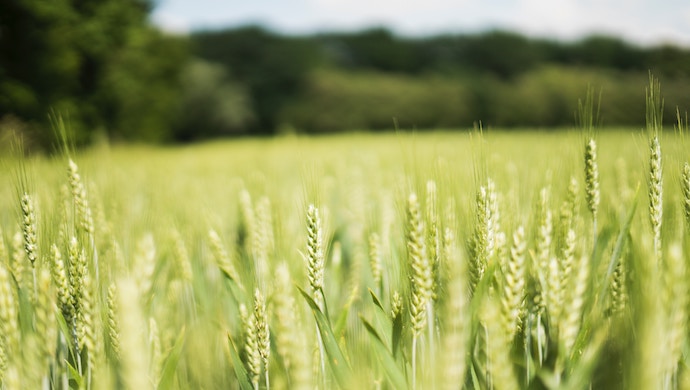Singapore currently imports more than 90 per cent of its food

A country that ranks as the second most densely populated country by the World Bank, Singapore has now gone on to a new journey on food innovation — agriculture technology (agtech or agritech).
The global farming systems have transformed in decades. With the advancement of agriculture technology, it is able to optimise the costs and outcomes based on the data analysis applied in crop monitoring system. Indoor farms come in hi-tech greenhouses and vertical farms; we have the insect farms, producing protein alternative for animals (including human) and aquaculture feeds by honeybees, silkworms and even cockroaches.
Urban farming is particularly ideal for Singapore due to the climatic and spatial conditions. So far, among the 200 local food farms producing fish, eggs and vegetables, 15 of them are indoor farms.
Local and global investors are eyeing agritech, boosting the local agritech as one of the dominated technology in the market. In this green city, these categories are aggressively transforming to be the best investment in Singapore, which are the agricultural biotech, the novel farming systems (fish, insect and algae farming), farm management software and the supply chain technology respectively.

Here are the questions we are concerned about:
Is it really sustainable in a country that faces scarcity of land?
What are the REAL VALUES of urban farming?
There is a precondition of high capital investment and energy requirement for urban farming. However, the emergence of local startups has scaled up the consumer markets nearby, including Malaysia, Thailand, Hong Kong and Australia. With the living standards improved, the consumers are more focused on the quality of getting safe, nutritious and qualified products.
On the ethical side, many of the agritechs are adopting the innovation framework Restorative Innovation, in a way that contributes and restores to the three pillars: health, humanity and environment.
Under the three pillars, the innovative technology is qualified as Restorative Innovation if such criteria are fulfilled:
- Building the products with an impact-driven aspiration to fulfil the intent needs and greater good for the community over the profits;
- Striving for a better quality for the products, compared to the disruptive innovation;
- Adopting a higher true cost at the initial production than mass market alternatives.
So in this case, consumers are taking the benefits side to their health by eating local-grown vegetables but also giving back to the environment by supporting the ecosystem that with a prohibitive higher production cost.
Here are some shining examples of sustainable agtech systems in trend now. Aquaponics, Aeroponics and Hydroponics, these are different methods of adopting agtech in productivity-focus and environmentally-friendly ways.
Also read: 4 ways agritech and IoT can revoluionise the farming sector
Hydroponics
More well-known, it is a way to grow plants without soil by nutritionising plants in a water-based environment. One of the local farms practicing this is Packet Greens, they are market-ready and recently raised US $1.5 million of VC money. Well-established Japanese electronic brand — Panasonic, sees Singapore as a new opportunity to grow leafy greens. They built a spacious 11/2 of a soccer field “farm” in its warehouse in TUAS, utilises both soil cultivation and hydroponics, and are expected to expand in the upcoming years.
Aquaponics
This combines aquaculture and hydroponics, it literally means using water (aqua) to fulfil the needs of cultivating plants and meanwhile feeding fish and other aquatic animals, a growing cycle that is profitable and totally sustainable. As urban farms are going to the mainstream in Singapore, more farms are embracing hydroponics and aquaponics at the same time.
Check out Comcrop at Scape for Saturday tours of their facilities. The Sky Greens is one of the pioneers in the local urban farming scene. They adopt a vertical farming system, optimising the products outcomes by the rotating tiers system that able to adjust the sunlight and nutrients the plants received.
Aeroponics
An interesting technology in growing plants without soil but air or a moist environment. It is currently employed by NASA and an innovative farm founded in New Jersey called AeroFarms. With the combination of aeroponics and indoor vertical farming, the algorithms behind are able to utilize the plant-growing environment, by its temperature, productive growing space, chemicals control and most importantly, saving up the water energy up to 95%, comparing to the traditional agriculture. This glad tiding allows Aerofarms to harvest their success and becomes one of the biggest indoor vertical farming companies in the world.
The diversity and market potential for the agriculture technology is unlimited. I believe that doing good for our health, humanity and the environment is a collective effort, I am more than excited to see what is happening in the upcoming years. What are your thoughts?
To understand Restorative Innovation better, visit: www.restorativeinnovation.com
Credits:
- Jovan Tan, who advised with the concepts of the innovative framework.
- Rufus C. E. Sorsa, who co-authored the paper.
—-
e27 publishes relevant guest contributions from the community. Share your honest opinions and expert knowledge by submitting your content here.
Photo by Lucas Marconnet on Unsplash
The post Can Singapore evolve to be an innovative farming country with agritech in the lead? appeared first on e27.